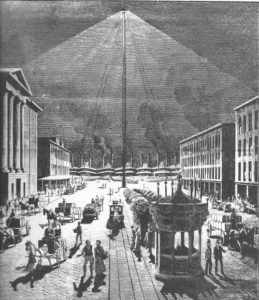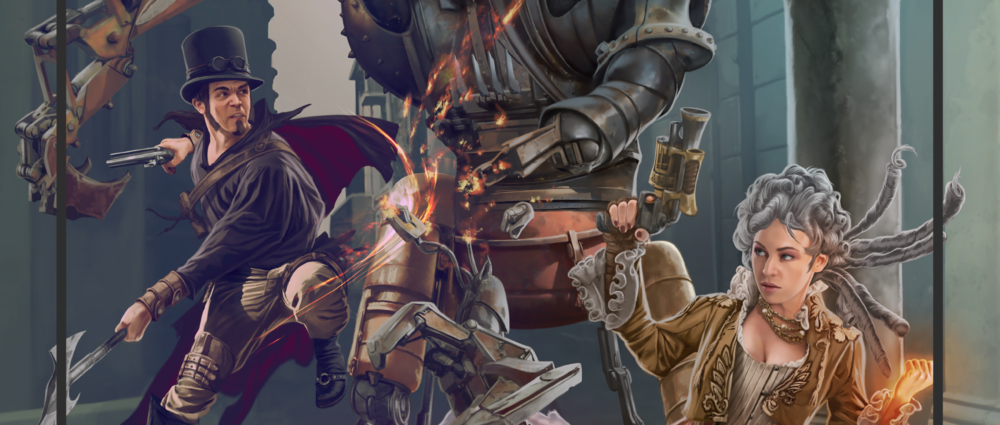
We live in an electrified society. A neon society, a civilization where if you live in a city of any real size the night’s darkness is frequently marred by light pollution. One has to go far into the countryside to get a proper view of the Milky Way, and the encompassing stars that vault the celestial dome above.
This is often forgotten by those of us who play or GM Victorian era role-playing games. We make assumptions on our own experiences, and all too often those experiences show cityscapes that are dim to be sure, full of shadows and dark alleyways, but on streets and corners the areas are brilliantly illuminated. Crimes can be observed, malcontents followed and apprehended, and generally one’s surroundings can be well-viewed.
This was NOT the case in the Victorian era. At least, not in most cities. Most cities were lit by gaslamps in large glass globes set at regular intervals on streets, much like today’s street lamps. Unlike the modern version, these lights barely put out enough illumination to allow decent sight more than a dozen paces or so in any direction. What’s worse, the globes were frequently grimed by the gas flames, local dirt, or deliberately smudged by local gangs and criminals to prevent the police from seeing them. All this means that the vigilante SuperMankind plying her duty to stop crime will have a harder time seeing in the dark than today’s crimefighters. Oh, there are inventions to overcome this in the Hunter & Hunter Catalog (catseye monocles come to mind) but all too often Steampunk super science must be employed, or heroes with Keen Senses as a supernatural power must use them to track down villainy to its lair and mete out justice with fists and blasts.
I did say “most” above, didn’t I? Well, a few cities in the United States tried something else to illuminate their streets. In the last two decades of the 19th century, cities such as Chicago, Illinois and Austin, Texas deployed something called Moon Towers. These were stone and steel constructs around 150 feet tall and topped with massive arc lights. They were put in a grid, with anywhere from 20 to 35 towers built depending on the size of the city in question. As an example, Austin had 31 of the towers! They bought them from Detroit in 1894 after that city decided to try to move to electrical lighting, and the moon towers can be seen today for any curious tourists to Texas’ capital.
The nighttime illumination of these towers were enough to make the night seem like day within several blocks; and gave light brilliant enough to read a watch by. Furthermore, it gave a full moonlight illumination for up to half a mile from the tower proper. Alas, it wasn’t perfect, and since it came from a tower nearby buildings could, if tall enough, create pools of very deep shadow behind the structure. However, it was certainly superior to gaslamps and it became a small fad for several American and Canadian cities.
Since Victorious isn’t strictly speaking entirely historical (Steampunk and the Supernature are very active one way or another), a Genteel Magistrate could give as many or as few cities these fonts of moonlight as she wishes. Just remember that darkness has not quite been defeated in this era of the Victorious Age.
Here’s hoping this lights the ol’ light bulb (or moon tower) over your head!
Genteel Magistrate

